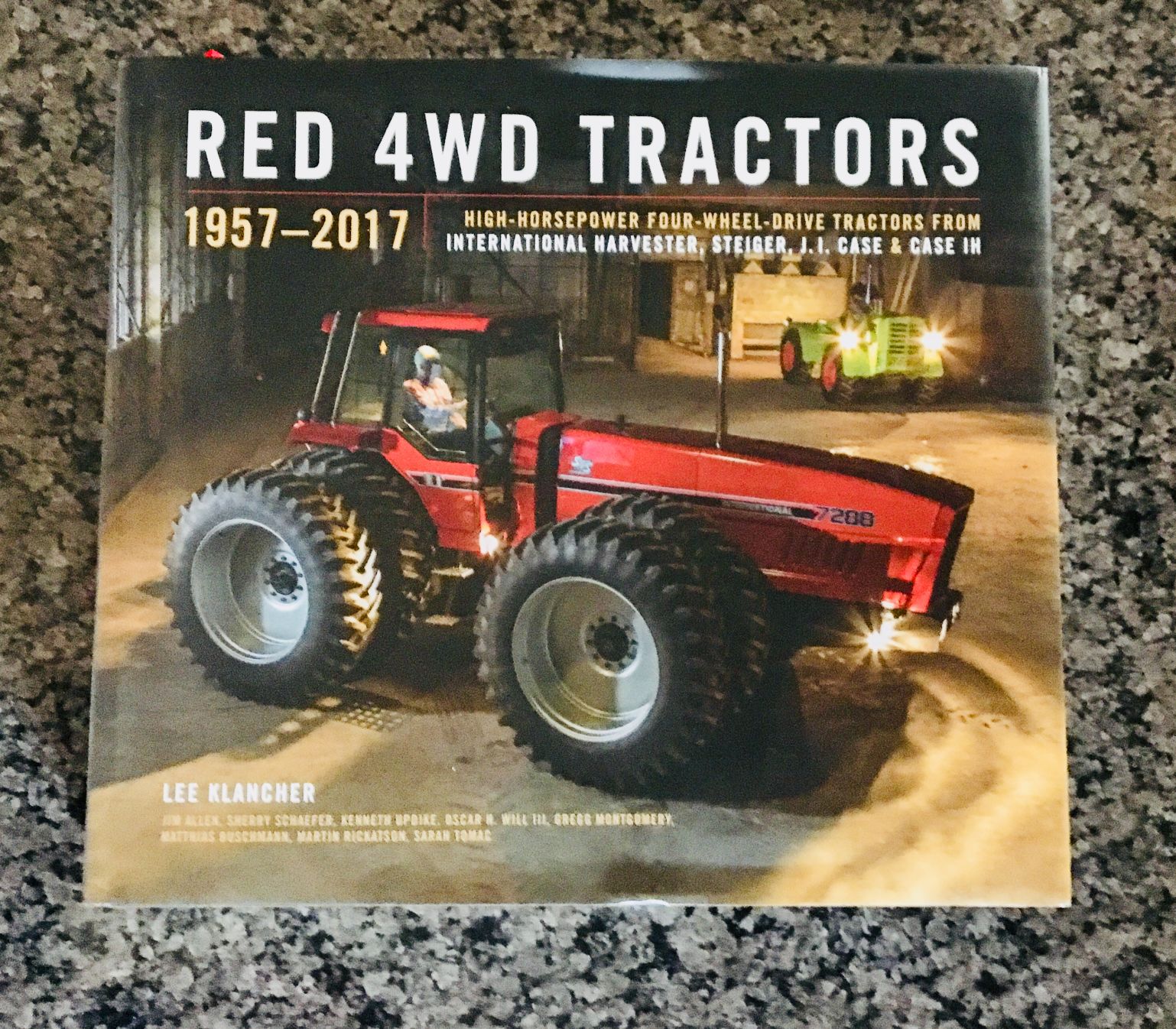‘Red 4WD Tractors’ paints a great picture of the rise of tractor powerhouses

Growing up behind the wheel of an old, chartreuse-colored Steiger Bearcat, I felt as if I was on top of the world. The tractor may have been worn out when my father bought it, but it still marked a major improvement over the Case 930 on which I learned to be a tractor operator.
So when Octane Press released Lee Klancher’s book “Red 4WD Tractors” in September 2017, I jumped at the chance to buy it. The official title adds the words: “1957-2017: High horsepower four wheel drive tractors from International Harvester, Steiger, J.I. Case and Case IH.” The cover photo is striking: a well-thought out composition of an International 7288 2+2 tractor in the foreground, with Steiger Model 2 in the background; shot by the author in abandoned Air Force hangar in Rantoul, Illinois.
The cover sets the stage for 384 pages of incredible full-color photographs and black and white illustrations of all-wheel drive tractors that never made it off the drawing room floor, to prototypes built by the major manufacturers.
Today, CNH, John Deere and AGCO dominate the global market for four-wheel drive tractors. Yet as Klancher writes in this extremely well researched book, the race for more horsepower and traction to get that power to the ground began as early as the 1900s. Farmall even built prototypes in the 1930s, although these ideas never materialized into production machines.
Yet it wasn’t until the 1950s that farmers sought these higher horsepower machines in numbers high enough to merit production. The Wagner family of Portland, Oregon, was one of the first, offering three models from 114-165 horsepower from their Wagner Tractor Company in 1954.
Near Red Lake Falls, Minnesota, meanwhile, farmer John Steiger and his sons, Douglass and Maurice, needed higher horsepower machines. They considered a Wagner, but decided to build their own in a converted dairy barn. And that is where Klancher’s book really takes off.
Steiger, of course, became a household name in farm country. The company built tractors for International Harvester, Allis Chalmers, Canadian Co-op and Ford at one time. Meanwhile, J.I. Case had its own novel 4WD tractors. International Harvester was late to the game, but brought forth the famous (or infamous, depending on who you talked to) 2+2 tractors. Klancher devotes chapters of history to each manufacturer, including their respective forays into mechanical front wheel drive technology.
In 1984, Tenneco—owner of J.I. Case—bought International Harvester. For a short while, the unique Case 4WD tractors were painted Case International red and black. Two years later, Tenneco bought Steiger. The rest, as they say, is history. While Klancher is the primary author of Red 4WD Tractors, many other historians contributed their own versions of the stories behind each manufacturer’s products. There are hundreds of photographs unique to this book, making it indispensable for fans of all 4WD tractors. And for enthusiasts of the title subjects, a model list of each tractor produced by the four manufacturers and the years they were built adorns the last few pages.
In addition to the regular hardcover version, a special leather-bound edition features additional photos of special prototype tractors.
Should you wish, the book is attractive enough to display on a coffee table. But it may be better suited in the farm shop, so that you and your neighbors can relive the history of this important era of tractor history. Either way, Klancher’s Red 4WD Tractors is a good read.
Bill Spiegel can be reached at 785-587-7796 or [email protected].

